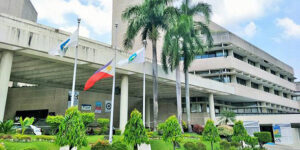
Metro Manila traffic made the national headlines again last week after the 2023 TomTom Traffic Index ranked the capital city as having the worst traffic congestion among 387 metro areas in the world.
Even Coldplay’s Chris Martin commented on it during their concert at the Philippine Arena in Bulacan on January 19, saying “We’ve seen some traffic, but I think you have the number one in the world. So, thank you, thank you for making the effort to come through all that bullshit to be here!”
Out of 387 cities across 55 countries, Metro Manila topped the 2023 TomTom list of metro areas with the slowest travel time. It found that on average, it takes 25 minutes and 30 seconds to travel 10 kilometers in Metro Manila. By comparison, the same distance takes only 8 minutes and 40 seconds in Kansas City, which boasts one of the quickest average travel times.
No Filipinos were surprised with the ranking, as their experience seems to match the findings, but the Metropolitan Manila Development Authority has spoken up and is seeking clarification on the methodologies used in the study.
“We want to know the methodology involved,” said MMDA acting chairman Atty. Romando Artes. “If there is an actual count and when did they conduct the study.”
It is natural for the MMDA and other transport officials to want to dispute the ranking, and if they are asked, they already have an idea what causes the notorious gridlock, which could be combination of vehicular volume, illegal parking, illegal structures, bottleneck areas, and numerous traffic violators managing to get away scot free. Hopefully, the pain and embarrassment of the ranking motivates them to do much better and improve the traffic situation not only in the metropolis, but also in all other metro areas of the country.
Areas like the Metro Bacolod area, where traffic is starting to become an annoying problem, should learn from the Metro Manila experience and its failures, especially as our cities start to grow and progress. Traffic doesn’t have to be a badge of progress because it can be managed with well thought out infrastructure, policies, and the enforcement of rules. If our local officials can learn from the mistakes and the best practices of other cities, ours doesn’t necessarily have to suffer the fate of Metro Manila, where the problems have been allowed to pile up and fester to the point that finding a solution has become a Herculean task.*







